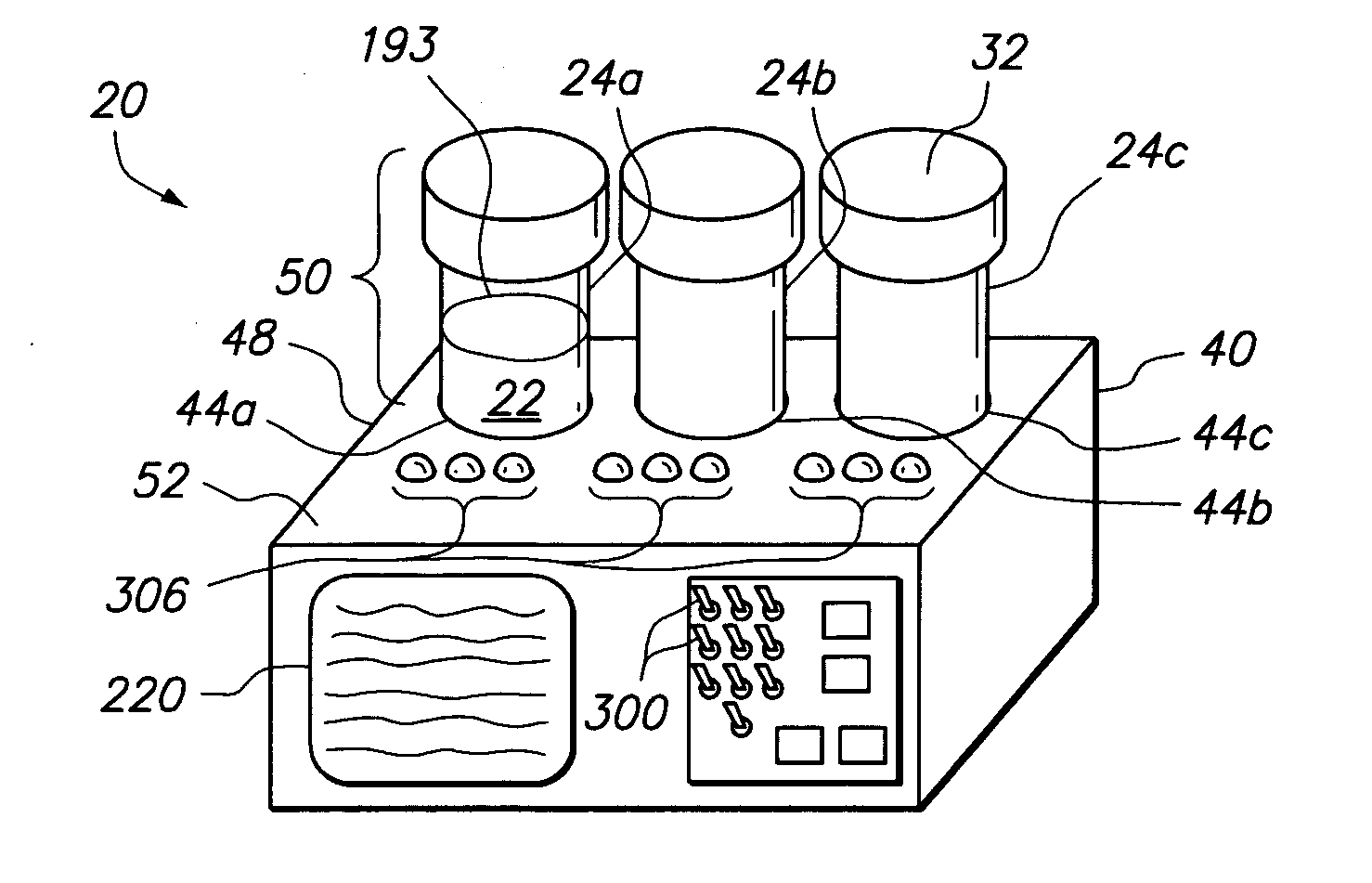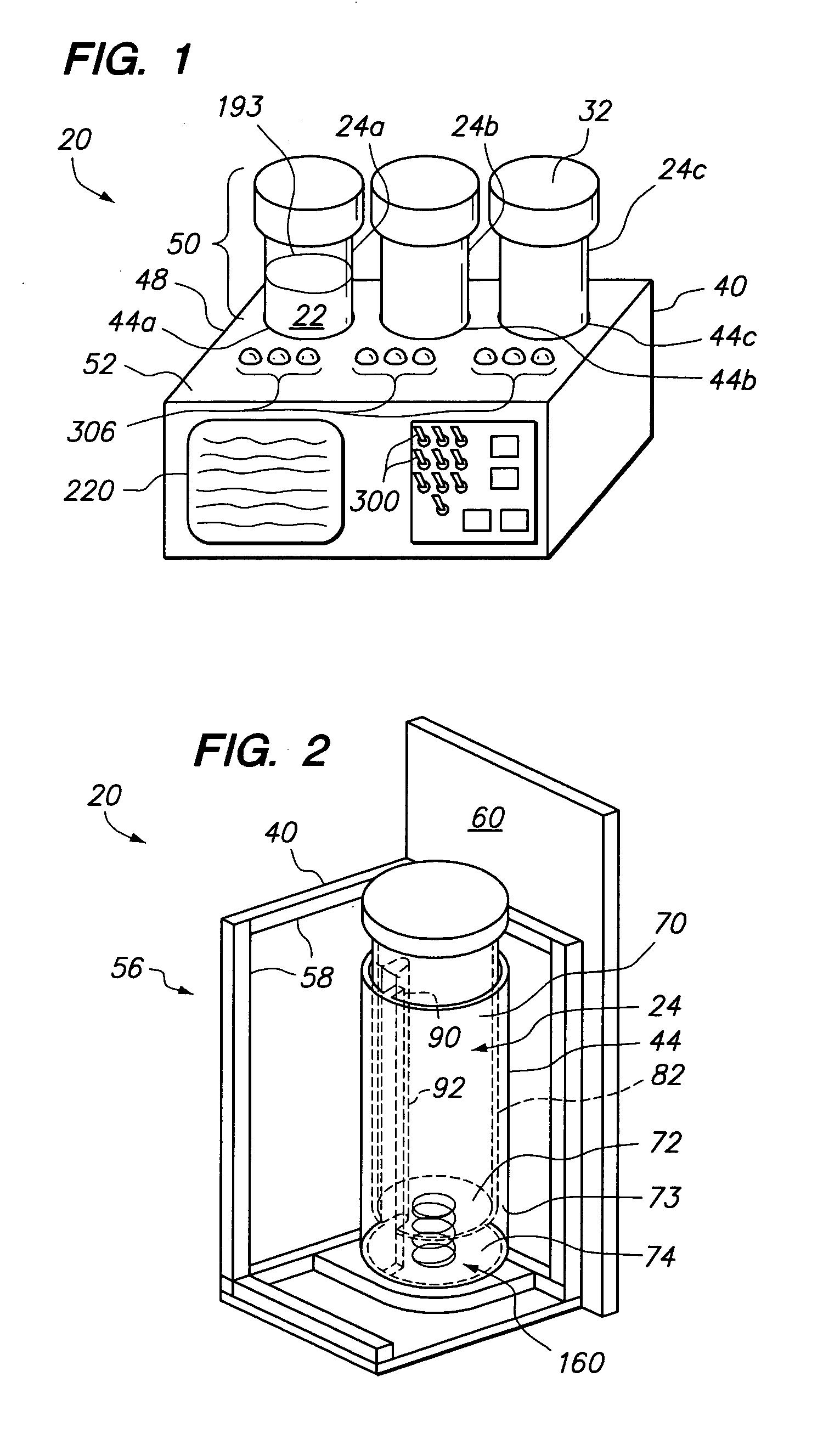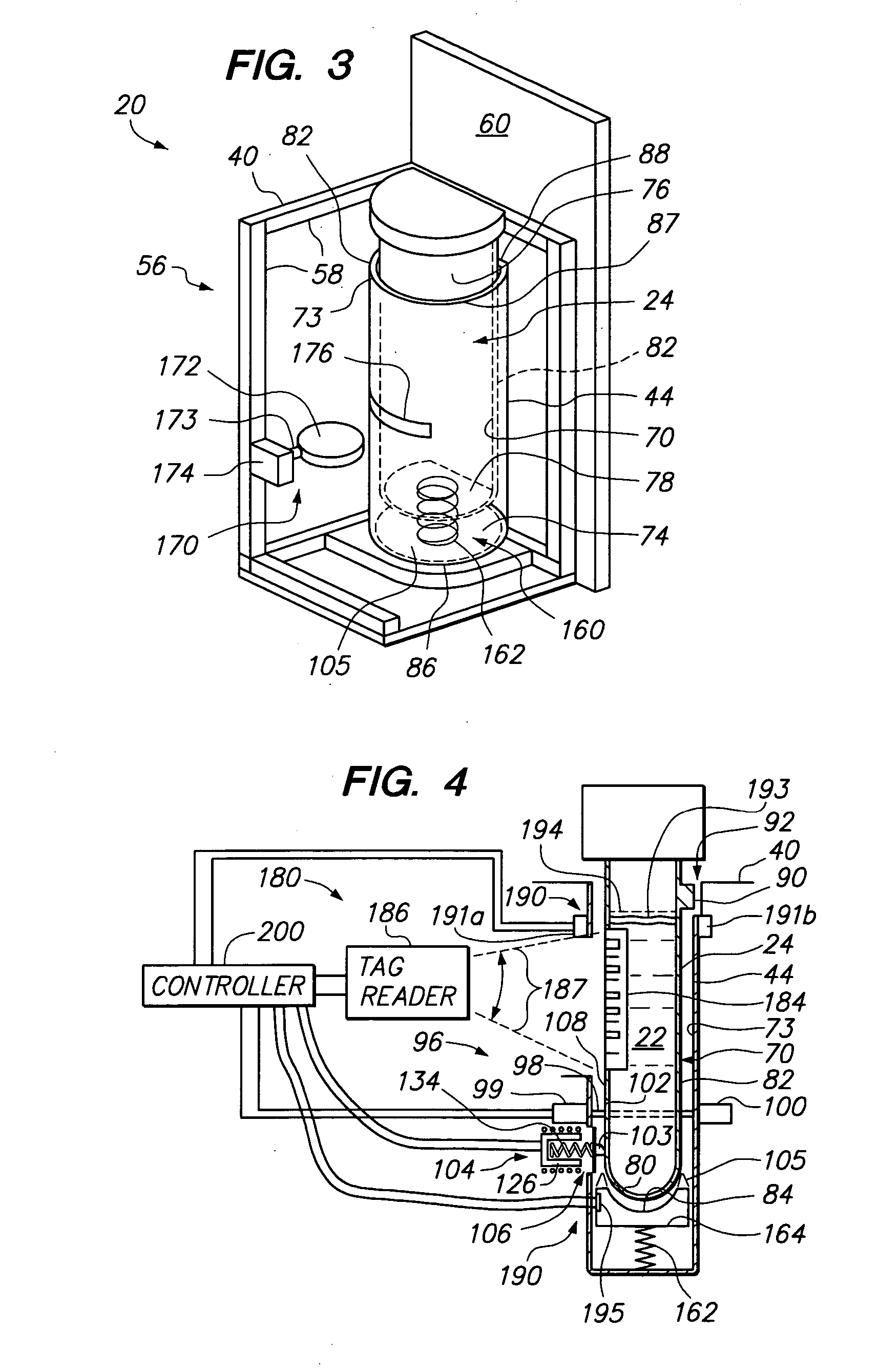Synchronization of sample and data collection
a technology of data collection and sample, applied in the field of synchronization, can solve problems such as false identification, improper diagnosis, and donor treatment erroneous, and achieve the effect of synchronizing and synchronizing the data collection and sample collection
- Summary
- Abstract
- Description
- Claims
- Application Information
AI Technical Summary
Problems solved by technology
Method used
Image
Examples
example 1
[0072] A physician orders a sample collection for a specific test for a specific donor. This is recorded in a network accessible Look-up Table. The sample donor arrives at a sample collection facility. The donor is identified to the sample collection device and the sample collection procedure is identified. The sample collection procedure is carried out by the operator. In this system the operator does not need to know how the sample 22 is to be tested. The donor does not have to carry any forms that can be lost, and the operator does not need to know the personal identity of the sample donor if a non-name identification system is used. The privacy of the sample donor can be protected throughout the process with only the physician having access to the results of the test. In another configuration even the physician could be excluded from knowing the results of the test and only the donor could have access to the results.
[0073] An operator can control the collector 20 using a data i...
PUM
 Login to View More
Login to View More Abstract
Description
Claims
Application Information
 Login to View More
Login to View More - R&D
- Intellectual Property
- Life Sciences
- Materials
- Tech Scout
- Unparalleled Data Quality
- Higher Quality Content
- 60% Fewer Hallucinations
Browse by: Latest US Patents, China's latest patents, Technical Efficacy Thesaurus, Application Domain, Technology Topic, Popular Technical Reports.
© 2025 PatSnap. All rights reserved.Legal|Privacy policy|Modern Slavery Act Transparency Statement|Sitemap|About US| Contact US: help@patsnap.com



